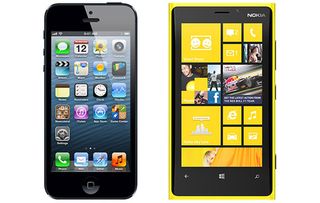Why I swapped my iPhone for Windows
The case for defecting to Windows Phone

I've been a mobile phone polygamist for as long as I can remember. Carrying two phones was a small price to pay for the satisfaction of BlackBerry fulfilling my corporate (and tactile keyboard) desires and iPhone tending to my personal whims.
So when Nokia came out of the darkness late last year with its Lumia 920, I assumed it would be just another device I'd test and move on from within a week.
I'm in a lucky position for any phone geek, with a job that allows me to trial the latest and greatest in mobile devices. Given that cost and contracts aren't an issue for me, I gave the phone an obligatory play; five months later the game continues on.
I've trialled enough phones over the years to know that no matter how great a device may be, whenever you tinker with something new frustration quickly surfaces simply because it's not what you're used to.
The Lumia is different. It doesn't miss a beat in this transition, from the out-of-the-box layout of its Live Tiles to basic task functions, the interface makes perfect sense.
At first glance you may, like me, pick up the Lumia and immediately scoff at its weight and size. Granted, it's a solid handful, but this fact soon becomes a robust feature.
It's a welcome change to have a phone I know I can drop, with glossy Gorilla Glass that would take a sledgehammer to break. After smashing two iPhone screens in as many years, tolerating a bit of bulk is well worth it to save hundreds of dollars in repair fees.
Get daily insight, inspiration and deals in your inbox
Get the hottest deals available in your inbox plus news, reviews, opinion, analysis and more from the TechRadar team.
All up, with its polycarbonate frame and ceramic body, it's only 43g heavier than an iPhone 4. Add on the 43g protective case you'll inevitably end up buying for the iPhone and all of a sudden the Lumia's extra bulk is easier to stomach.

Making the switch
Transferring contacts was as simple as pairing the Lumia with my old phone via Bluetooth and allowing it to populate my address book.
All contact images and themes were connected, my 'People' tile began to rotate pictures of my nearest and dearest, and that's when I started to think that maybe I could work with this.
The Windows 8 operating system itself is much more intuitive than the iPhone and even more so than most Android devices. Swiping moves in the natural direction you want to go and drilling down into apps can be easily exited from with a reliable back arrow and menu button.
Best yet is the organic personalisation of the home screen beyond anything I ever felt compelled to do with my iPhone. The more you interact with the phone, the more it prioritises what you want to see.
You can really make the Lumia your own, make it tell you the things you want to know through customised news tiles, social media streams and rotating photo feeds.
A Windows Live ID is the only thing you need to start navigating the phone, which it prompts you to make in only a few steps. There's no credit card verification or excessive details required (we're looking at you, Apple ID), just a username and password so you can jump in and start getting apps right away.
Once enabled, my first check was to see if the Lumia could offer a comparable marketplace. I was prepared for a sparser offering, but I will say the apps on WP8 feel fuller than they did on WP7, with much stronger features.
While still limited compared to the App Store, the Lumia offsets this with its superior native functionality, so you don't 'need' as many apps to do what you want to do.
